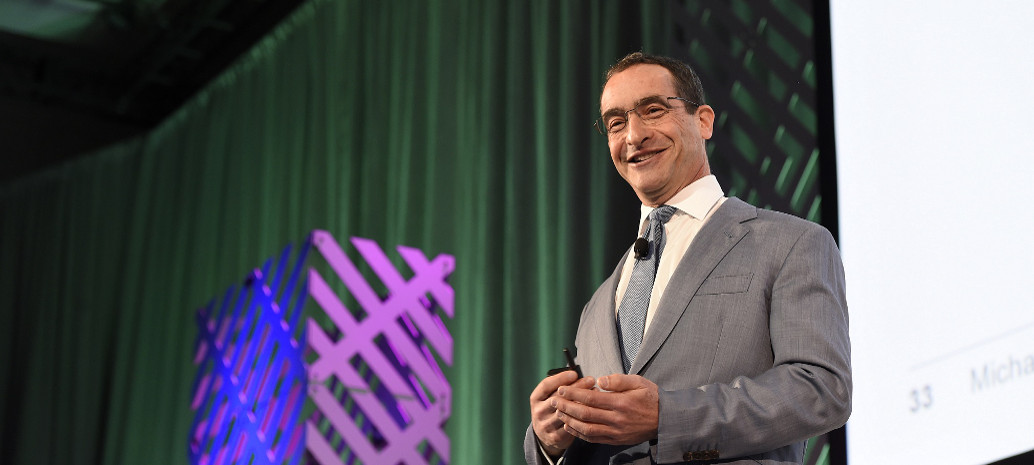There are plenty of reasons to be alarmed about the future, given not only the increasingly imminent danger of Climate Change, but also the rise of new xenophobic regimes and policies in the United States and Europe. Not to mention a new U.S. Administration that has appointed directors of federal agencies who were hand-picked by the fossil fuel industry and openly deny the scientific consensus on man-made Climate Change.
Today Michael Liebreich, the founder of Bloomberg New Energy Finance (BNEF), provided a potent counter-narrative to attendees at the BNEF Future of Energy Summit in New York City. Liebreich echoes the conclusions of many clean energy analysts, noting that despite what has been described as a “wave of Populism on both sides of the Atlantic”, that the future of solar, wind, and electric vehicle markets are very strong.
As usual, Liebreich’s thesis was soundly backed by figures. Prominently, he noted falling costs for wind and solar, with the price of solar reaching a new record low $26.7 per megawatt-hour (MWh) in Mexico. And this is hardly limited to solar – Liebrich notes new record low prices for wind, with even offshore wind reaching a new record low of $49/MWh and merchant offshore wind in Europe.

Similarly gas and oil prices remain very low, which led Liebreich to update his description from last year’s presentation of an “Age of Plenty” to the “Age of Plenty on Steroids”. This means cheap, abundant energy, and increasing portion of which comes from zero-carbon renewable energy sources.
Nor did Liebreich appear to be phased by the Trump Administration and its “strange fetish for coal”. Indeed, he welcomed attendees to his talk as “fellow members of the Climate Industrial Complex”, a phrase from Myron Ebell’s rather paranoid interview from the previous day. Additionally, in a series of slides clearly showed how it was automation and a shift to gas that has decimated coal employment.
At the end of the day, Liebreich notes that with the federal Investment Tax Credit (ITC) and the Production Tax Credit, U.S. wind and solar markets remain “robust, strong and attractive”.

So Trump or no, the Energy Transition is happening faster than anyone expected. Liebreich notes that 2016 was another year where economies grew in Western nations like the United States, but that emissions did not. This is happening as the United States moved from 3% non-hydro renewable energy to 9% from 2006-2016, while China moved from 6% o 10%, and a number of European nations reached 25% or more non-hydro renewable energy penetration.
This rapid progress is accompanied by high spot penetrations of wind and solar and is driving down capacity factors at thermal generation. As such it is driving new concerns, and the issue of grid integration of high penetrations of renewable energy is no longer an academic exercise.
Liebreich dove into some of these issues in his presentation, noting that even huge storage will be overwhelmed by the variability of wind. That means it will be practically impossible to get rid of all fossil fuel use. He also notes that the massive volatility of very high wind and solar penetrations will mean enormous ramp rates. It will also require robust interconnections between grids.
All of this is pretty standard for the large number of studies that have been produced to date regarding high penetrations of renewable energy. But what is more novel is that due to the success of wind and solar, we are having to deal with these issues in 2017, not 2025 or 2030.
Liebreich also dove into electric vehicles, which BNEF has been very bullish on, predicting 35-47% of new cars will be electric by 2040. And while only 1 in 500 new cars on the road is electric today, Liebreich notes that 40% of new cars in Norway have plugs, up from 3% in 2011, in part due to tax policies which make comparable conventional vehicles more expensive than EVs.
“This stuff can change fast – very fast”, notes Liebreich. “Once the sticker price of an electric car is lower than the sticker price of the equivalent of an internal combustion car, you will see 40% market shift in any country in the world.”
And despite the challenges, Liebreich remains highly optimistic about the future. “We are going to win so much your head will spin,” he declared.
This content is protected by copyright and may not be reused. If you want to cooperate with us and would like to reuse some of our content, please contact: editors@pv-magazine.com.



“It will be practically impossible to get rid of all fossil fuel use” (for electricity).
First, eliminating the last 10% of generation from gas is a small and manageable problem for the future. Second, even Liebreich is still in some respects locked in the old paradigm. Solar and wind at an LCOE of 2c/kWh can be curtailed 50% of the time and still come out at a perfectly acceptable effective cost of 4c. Massive overbuild will be perfectly economic. After all, gas peakers are bought today with expected capacity factors under 10%. This oversupply will create opportunities for hydrogen catalysis: with free electricity (on a depply intermittent basis), the only term in the cost equation is that of the capital equipment, efficiency is irrelevant.